Are you a Quiet Speculation member?
If not, now is a perfect time to join up! Our powerful tools, breaking-news analysis, and exclusive Discord channel will make sure you stay up to date and ahead of the curve.
Who tuned in to watch the Star City Games Milwaukee Open? I was going through some Modern coverage withdrawals since the horrors of Eldrazi Winter, and I deliberately blocked off time to enjoy as much of the Day 1, Day 2, and Top 8 action as possible. Milwaukee did not disappoint! With one of the most diverse Day 2s in recent memory, an action-packed and relatively open Top 32, and a format widely lauded as healthy and enjoyable, the Open was Modern at its finest. Add the April 4 unbans, the long-overdue removal of Modern Pro Tours, hundreds of decklists from Modern Championship Weekend, and an upcoming Modern Grand Prix extravaganza? Oh yeah---it's a great time to play Modern, and an even better time to analyze the metagame.
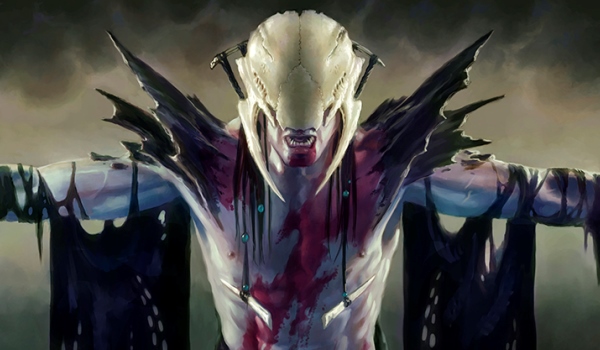
Last Monday, I praised Wizards' decision to forever unchain Modern from its Pro Tour albatross, and I promised to unpack Aaron Forsythe's nine Modern guidelines in a followup piece. I'm still going to write that article for next week, but with all the SCG States/Provincials data on top of our SCG Milwaukee results, our deck and event n is just too enticing for a statistician like myself. The monthly metagame update is calling! Our last metagame breakdown was in March, surveying a Tier 0 Eldrazi landscape that heralded the end of Modern as we knew it. Then came the obliteration of Eye of Ugin and the dual Ancestral Vision/Sword of the Meek unban. Modern was officially reborn and today we have the results to show it.
We're just under a month into this new Modern and the format has never looked healthier. Today I'll dig into the Tier 1, Tier 2, and Tier 3 contenders in Modern as you prepare for the May Grand Prix and other Modern events. Whether you're playing in upcoming events, plan on watching the action on Twitch, or just want a data-driven picture of the post-Twin and post-Eldrazi Modern world, you've come to the right place.
[wp_ad_camp_1]
Data Collection Methods
Today's article marks our third foray into the "new" Modern, one where Splinter Twin is no more, where Eldrazi have been brought to heel, and where Vision and Sword are free to bolster blue strategies everywhere. Our first metagame check-ins, one on April 13 and one a week later on April 20, used a smaller-n dataset to predict where the metagame would head in the closing weeks of April. We've more than tripled those numbers from earlier and are ready to make some concrete observations about where the format has been and where it might be heading.
In this month's update, we're drawing from about 130 paper events spanning just shy of 1,000 decks. We'll augment that with 18 Magic: The Gathering Online standings from Leagues, about 170 decks in total, plus the high-level Day 2 and Top 16 results from SCG Milwaukee. We calculate "Overall Metagame %" shares using a weighted average of all these standings, accounting for both the number of events relative to previous metagame periods, and the number of events relative to different categories in the sample. For instance, MTGO Leagues make up about 18% of the n = 982 paper decks, so it counts proportionately less to the "Overall Metagame %" shares. We also use a point system to resolve ties and give additional weight to major finishes. For more information, or to see the entire dataset, you can check out our Top Decks page.
Tier 1 Decks
No Tier 0 nonsense this time! I'll be happy if we never need a Tier 0 section again, and today's update is a great transition from the tentacled nightmare of March into the Visionary utopia of April and beyond. As always, Tier 1 represents the most-played decks in Modern. These are the decks you are virtually guaranteed to face at major events, and also those you must test against in your pre-tournament gauntlet. Don't leave home without sleeving up sideboard answers to these decks-to-beat, or without having a clear maindeck gameplan. Tier 1 status doesn't necessarily mean these are the highest-performing options in the format, but they are undeniably popular and their popularity is often for good reason---expect to see them in many Top 8s to come.
Tier 1: 4/8/16 - 5/1/16
Occupying just over 37% of the entire metagame, Modern's current Tier 1 spotlights the trusty format core of Jund and the Big Aggro Three (Affinity, Burn, and Infect). Hopefully their presence, particularly Jund's, silences all the hyperbolic nonsense about recent unbans destroying midrange's or aggro's chances. These Modern pillars are joined by RG Tron and Abzan Company, two decks which saw intermittent Tier 1 presence throughout 2015 and now return in this newest update. Of course, Snapcaster Mage fans are already shaking their heads at the absence of Bolt-Snap-Bolt, but keep the pitchforks down for now! Even accounting for the missing blue link, we're still surveying a Tier 1 that sees no single deck over 10% of the format, a metagame-wide trend that was echoed in SCG Milwaukee's Day 2 stats. It doesn't get much healthier than that and it's a great starting point.
Because Tier 1 decks are such integral players in our metagame, let's go deck by deck to identify some core themes and consequences of these strategies' successes.
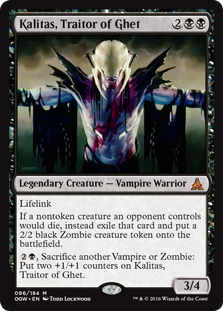 Stop betting against Jund (9.4%)
Stop betting against Jund (9.4%)
It's fashionable to dis Jund's weaknesses in uncertain metagames, just as it's tempting to ignore Jund's efficient disruption when testing for events. I even know diehard Junders who traded Tarmogoyf, Dark Confidant, and buddies for something "safer" over the last two weeks. I'm hoping results like today's expose the error in all these doubts. Simply put, Jund is almost always a good Modern choice, especially in uncertain metagames. Doubly so in uncertain and aggressive metagames where Lightning Bolt is supreme. Showcasing Jund's versatility in an evolving format, about 75% of Jund lists at SCG States summoned Kalitas, Traitor of Ghet in their maindeck flex slots, a percentage echoed across April. Headcrab Vampire is quickly becoming a Jund staple, lifelinking his way through the Burn or Zoo matchup and exiling Abzan Company's best tricks.
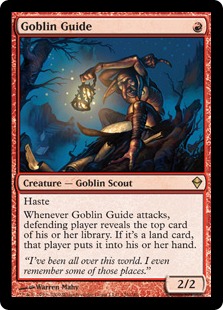 Burn (6.9%) wins the Big Aggro Three
Burn (6.9%) wins the Big Aggro Three
This surprising development refutes an observation I made earlier this year: "never bet against Affinity." In January 2016, having wrongly predicted Burn overtaking Affinity in numerous updates, I postulated the robot's raw power would keep it ahead of Burn in all but the strangest metagames. April is a pretty typical Modern scene, and yet we finally see Goblin Guide surpassing Arcbound Ravager. A small n certainly isn't to blame, so what happened? I believe heightened Affinity hate (more on that soon) and divided aggro shares spurred Burn's rise. With players committing more attention to big dogs Affinity and Infect, along with potent upstarts like Gruul Zoo and its variants making a Tier 2 fuss, traditional Burn has fallen off the sideboard radar. For instance, Jund isn't packing maindeck Kitchen Finks or boarded Feed the Clan anymore. Kalitas, for all his merits, is often a turn too slow to swing the Burn game, something Emma Handy learned in Milwaukee on Day 1. Expect all this to shift as players get tired of losing to Lava Spikes and remember Magic's oldest aggro deck.
 Right time, right place for Abzan Company (5.8%)
Right time, right place for Abzan Company (5.8%)
Coming off Eldrazi Winter, Abzan Company was poised to maintain Tier 1 status. Unlike Affinity, Company decks slipped through the metagame cracks, exploiting a field geared against artifacts, worried about Jund, and preoccupied with beating the inevitable Ancestral Vision decks. The (exaggerated) tales of RG Tron's demise also shipped ramp players away from the Urzatron, one of Abzan Company's historic foes. All these factors allowed Abzan Company to cement its Tier 1 superstar status after being relegated to Tier 2 for much of 2015. Pilot experience also is at play here. Many Company experts have now been on the deck for a full year, in addition to recently honing their skills in the Eldrazi crucible. Expect Abzan Company to bounce between Tier 1 and Tier 2 for 2016, but don't be surprised if its shares slip now that everyone knows Company is a major deck-to-beat.
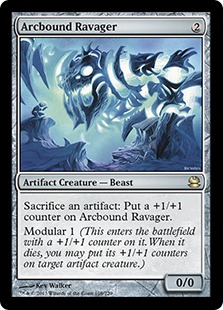 Modern's Ancient Grudge for Affinity (5.8%)
Modern's Ancient Grudge for Affinity (5.8%)
Don't oversell Affinity's dip. You're still looking at the longest-running Tier 1 hallmark in Modern, even if certain metagames are more hostile than others. Unfortunately for the metalcrafting machines, April was about as hostile as a metagame could get. Emerging from Eldrazi Winter, everyone knew Affinity would be the defining, top-tier deck in Modern. Naturally, this increased the format's stock in Grudge, Stony Silence, and Wear // Tear, along with all the spot-removal and sweepers doubling as bullets to combat the invariable aggro uptick. Those pressures alone would have been daunting, albeit surmountable, but then came Sword of the Meek. Although Thopter Sword has bombed in this first month, fear of the combo pushed players even deeper into devastating anti-artifact nukes. Bad news: these factors sunk the Affinity ship (the deck had a laughable two Day 2 representatives at Milwaukee). Good news: even a "sunk" Affinity is still a Tier 1 deck at 5.8% of the format, so it's bound to return soon.
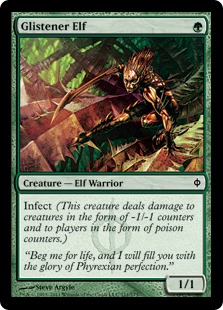 Infect (5.6%) is still Infect
Infect (5.6%) is still Infect
Of all the Tier 1 decks, Infect requires the least analysis. It's been Tier 1 for basically all of 2016, and will continue to be Tier 1 until we get some Snapcaster Mage and Lightning Bolt decks back in the action. Even then, Infect has enough power to bully through stalled boards and steal games from weaker, lower-tier decks. Don't expect it to stay out of Tier 1 contention for longer than 1-2 months. That said, with Burn and Jund currently regulating Infect in just Tier 1, and with Tron decks no longer common prey for turn one Glistener Elf, this update likely represents a cap to its metagame share.
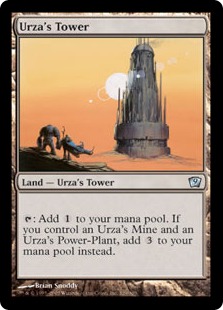 Exploiting gaps with RG Tron (3.6%)
Exploiting gaps with RG Tron (3.6%)
If you thought Eye of Ugin's death signaled a parallel demise of RG Tron, you have no one but yourself to blame for Karn Liberated losses you suffered over the past weeks. As I warned in my pre-SCG States article, "...with players shifting away from land destruction, big-mana ramp decks can really shine in a post-April 4 world." We saw this at States and at the Open. At 2nd and 10th at Milwaukee respectively, both Joe Lossett and Michael Stone didn't hop on the forums and whine about the crippled Urzatron. They made some minor adjustments and reminded people why you can't ditch your Fulminator Mages, Ghost Quarters, and Crumble to Dusts without consequences. RG Tron also capitalized on a field polarized towards Abzan Company and Jund, two excellent matchups that move into massacres when the BGx players forget their land interaction. Early successes aside, I don't expect the Tron coup to last. if you're a ramp player, exploit the format while you can. If you're a ramp opponent, remember to respect this deck even without its Eyes.
Sharp readers may raise an eyebrow at RG Tron's 3.6% overall metagame share. As we'll see in Tier 2, Jeskai Control, Gruul Zoo, and Merfolk all matched or beat that share and didn't get Tier 1 status themselves. As discussed earlier and on our Top Decks page, this is where our point system assigns extra weighting to certain finishes. RG Tron, with a Top 8 and a Top 16 performance at the Open, edges out its 3.6%-3.8% peers by a nose to get the Tier 1 nod. This more accurately captures both Tron's upstart nature in the past month and describes its post-Milwaukee momentum going into May.
We spent more time than usual on the Tier 1 environment, and I'm entirely comfortable with that for our first update after the Eldrazi downfall. Modern metagames revolve around Tier 1 competitors. Between the January and April changes, this update describes a format foundation which will underlie all future metagame developments for the rest of 2016. Tier 1 strategies are central to that groundwork.
Tier 2 Decks
Modern's Tier 2 club represents competitive strategies with proven tournament success over the past month. Assuming you know your deck and know how to play the field, any of these Tier 2 contenders can make it to the top tables and win even the largest events. From a testing perspective, you shouldn't necessarily expect to encounter each and every strategy in Tier 2, but you must know how these decks work and how they win. No need to jam Torpor Orbs into your board to thwart Death and Taxes, but no excuses either if you crack a fetchland into an untapped, two-counter Aether Vial with Leonin Arbiter lurking in the opponent's hand.
Tier 2: 4/8/16 - 5/1/16
This month, Tier 2 brings us 11 decks making up about 33% of the collective Modern metagame. By contrast, Tier 1 only takes about 37% of Modern, which suggests an unusual degree of openness where there isn't much of a gap between Tier 1 and Tier 2 viability. That's great news for anyone who wants to succeed with a Tier 2 strategy, but less exciting if you're already tight on sideboard space and are worried about 11 new foes. Speaking of openness, our 11 Tier 2 decks cross the archetype spectrum, with aggro, combo, midrange, control (blue-based control, no less), and hybrids all sitting on roughly equal shares.
We're not going to tackle Tier 2 one deck at a time. Instead, we'll explore one of Tier 2's most important narratives, and make a few deck-specific observations on noteworthy strategies.
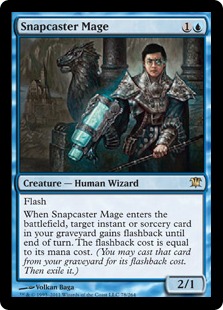 Blue-based control (10.1%) is getting there
Blue-based control (10.1%) is getting there
Taken as a group, Jeskai Control, Scapeshift, and the Grixis Control/Midrange spectrum make up 10.1% of the format and the biggest segment of Tier 2. If we add sub-Tier 3 stragglers such as Blue Moon, Thopter Gifts, UW Control, and others, we'd be closer to the 12% range. This compares very favorably to BGx Midrange at 12.8% (Abzan's 3.4% plus Jund's 9.4%), suggesting the Snapcaster Mage and Ancestral Vision decks are just one month away from solid Tier 1 status. You'll notice I've merged Grixis Control and Grixis Midrange into one joint share for this update. This helps us focus on the Grixis core (Tasigur, Terminate, Snapcaster, Bolt, Kolaghan's Command, etc.) without getting distracted by dissections of archetype definitions. As you prepare for May, ready yourself for any of these blue-based representatives to pull ahead. All of them bring a unique strength to the table, and all of them have about equal momentum heading into the next month.
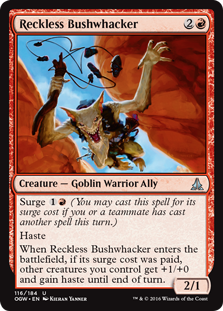 Aggro's new standard: Gruul Zoo (3.7%)
Aggro's new standard: Gruul Zoo (3.7%)
Both Jordan and I once agreed Gruul Zoo (the RG or Naya variants using Experiment One and Burning-Tree Emissary) was a proverbial canary in the Modern coal mine. For us, the presence of such a committed, linear deck signaled fundamental metagame imbalance. Going forward, I no longer believe this classification to be the case. What changed? Reckless Bushwhacker. Big Goblin Bushwhacker gives a sizeable boost to the Gruul Zoo strategy, pushing the go-wide aggro deck from metagame opportunist into Tier 2 regular. Expect to see plenty of Bushwhacking in the coming months as players try overpowering Jund's and URx's one-for-ones with a stream of hasty turn 2-3 attackers. Gruul Zoo opponents: bring sweepers. You'll get double-duty on them against the top-tier aggro decks and against Abzan Company plus Kiki Chord.
 Where the heck is Sword of the Meek?
Where the heck is Sword of the Meek?
You were warned. As I wrote before SCG States, Sword and Thopter Foundry were not safe metagame calls going into late April. The combo presents too many deckbuilding uncertainties for the average player. Even the above-average player will struggle to optimize a shell. These predictions played out perfectly over SCG States, SCG Milwaukee, and the surrounding tournaments: Thopter Sword was basically nowhere to be seen. Less than 4% of decks are currently running the combo in any capacity. Those who do are split between a staggering array of UW Thopter Gifts, Grixis Sword, Jeskai Sword, UW Tron, UB Tezzerator, and even Krark-Clan Ironworks Eggs. Do not expect an optimal list to emerge until Grand Prix Weekend. That said, I do fully expect we'll see such a list rise to the top during the Grand Prix. I also expect it will be a Grixis, Jeskai, or UW Control deck which isn't committed to the combo and doesn't succumb to the format's ample artifact hate and impending surge of anti-Abzan Company graveyard interaction.
Other notable Tier 2 appearances include the linear combo and ramp hybrid of Titan Shift (2.2%), which mostly underscores the Modern mandate of going linear in uncertain metagames. We're also seeing Death and Taxes (2.4%) make a Tier 2 debut after months in Tier 3 purgatory, taking advantage of Eldrazi Temple to augment its Flickerwisps with Wasteland Stranglers and Eldrazi Displacers.
Overall, Tier 2 highlights Modern's considerable depth in the post-Eldrazi world. It's particularly exciting to see the tiny differences separating Tier 1 and Tier 2 contenders, which point to just how open this new Modern is. Don't expect this top-tier free-for-all to last long---Grands Prix invariably narrow the field as players gravitate towards frontrunning strategies. Until May 20, however, it's anyone's game at the top tables and I wouldn't be surprised to see any of these Tier 1 or Tier 2 decks shuffle around on Magic's biggest stages.
Tier 3 Decks
We'll end our survey of the metagame climate with the Tier 3 Modern strategies, a grab-bag of semi-competitive decks at the Modern fringe. You should neither expect to see these decks at tournaments nor expect to succeed if you bring them, but you also shouldn't be surprised if the metagame stars align to help them succeed. These decks are heavily dependent on metagame and format context. Some are solid MTGO options but will fall flat in paper. Others may smash through the field in the right FNM or Sunday tournament, but get smashed to bits at the wrong one. If you are experienced with these decks and/or know the metagame context is right for them to succeed, then don't let their Tier 3 status deter you. If not, play it safe with a Tier 1 or Tier 2 option.
Tier 3: 4/8/16 - 5/1/16
As usual, Tier 3 is a buffet of tested mainstays (Bogles, Living End, Naya Company) and enticing newcomers (Goblins, Taking Turns, Mardu Midrange). If you're deciding between Tier 3 decks, you'll want to interpret these different categories through different lenses.
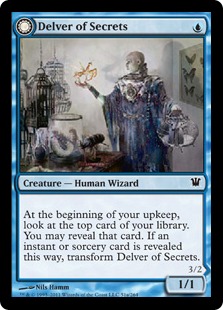 First, let's think about the former Tier 2 decks which have now fallen to Tier 3. This includes the previously-mentioned Bogles, Living End, and Naya Company, but also Griselbrand, Grixis Delver, UR Delver, and others. For lack of better terms, these decks are the "losers." At one point, they had the capacity for Tier 2 or even Tier 1 glory. Unfortunately, they aren't cutting it this month. This suggests some underlying incompatibility between their gameplan and the current metagame. For example, Delver decks shined when they had URx Twin to prey on, but are plucked apart by Modern's surge of spot removal and sweepers. When you see Tier 3 decks like this, you'll want to think twice before sleeving them up. Their Tier 3 status is a sign of metagame hostility. Only play these strategies if you know you're exploiting holes in a specific, local metagame, and/or if you are so familiar with these decks that you can overcome hostilities through experience. See Jordan's recent Temur Delver success at SCG States!
First, let's think about the former Tier 2 decks which have now fallen to Tier 3. This includes the previously-mentioned Bogles, Living End, and Naya Company, but also Griselbrand, Grixis Delver, UR Delver, and others. For lack of better terms, these decks are the "losers." At one point, they had the capacity for Tier 2 or even Tier 1 glory. Unfortunately, they aren't cutting it this month. This suggests some underlying incompatibility between their gameplan and the current metagame. For example, Delver decks shined when they had URx Twin to prey on, but are plucked apart by Modern's surge of spot removal and sweepers. When you see Tier 3 decks like this, you'll want to think twice before sleeving them up. Their Tier 3 status is a sign of metagame hostility. Only play these strategies if you know you're exploiting holes in a specific, local metagame, and/or if you are so familiar with these decks that you can overcome hostilities through experience. See Jordan's recent Temur Delver success at SCG States!
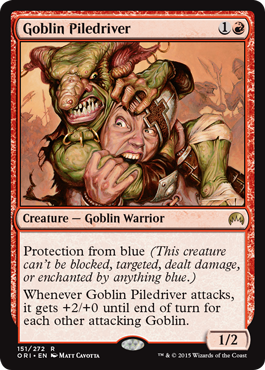 On the opposite side of the Tier 3 spectrum are the "winners." These are the decks punching above their weight class from the sub-Tier 3 depths, taking advantage of metagame conditions to put up results. I'm looking straight at the Goblins, Taking Turns, Mardu Midranges, Dredgevines, and UW Trons of Modern. In the case of decks like UW Tron and Taking Turns, recent technology (Sword and Vision respectively) might contribute to their newfound viability. In the case of Mardu Midrange, the deck might have a specific matchup it is leveraging to reach the top: MTGO's high Gruul Zoo share makes all those Mardu Inquisitions, Helices, and Bolts feel very useful. I'd still pick a Tier 1 or Tier 2 deck for a Grand Prix, but if you have the reps in these decks or can identify the exact condition which makes them shine, don't let me stop you from Piledriving to a Top 8.
On the opposite side of the Tier 3 spectrum are the "winners." These are the decks punching above their weight class from the sub-Tier 3 depths, taking advantage of metagame conditions to put up results. I'm looking straight at the Goblins, Taking Turns, Mardu Midranges, Dredgevines, and UW Trons of Modern. In the case of decks like UW Tron and Taking Turns, recent technology (Sword and Vision respectively) might contribute to their newfound viability. In the case of Mardu Midrange, the deck might have a specific matchup it is leveraging to reach the top: MTGO's high Gruul Zoo share makes all those Mardu Inquisitions, Helices, and Bolts feel very useful. I'd still pick a Tier 1 or Tier 2 deck for a Grand Prix, but if you have the reps in these decks or can identify the exact condition which makes them shine, don't let me stop you from Piledriving to a Top 8.
Metagame Predictions for 5/1 - 5/31
The only predictions I made during Eldrazi Winter were about the hated Eye of Ugin and its slightly less despicable cousin, Eldrazi Temple. This means there's no past predictions to revisit, so we can jump right to my predictions for the next month. Grand Prix Weekend is only a few weeks out, promising to solidify certain elements of the metagame and to upend others. In the spirit of American electoral primary season, here's one prediction each for both the status quo and the revolution:
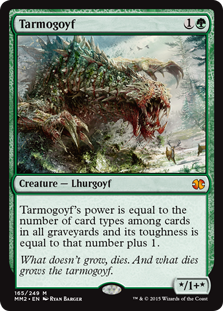 Jund, Abzan Company, and the Big Aggro Three stay Tier 1
Jund, Abzan Company, and the Big Aggro Three stay Tier 1
I know it feels like cheating to bet on the Modern establishment, but hear me out. It was a month to the day that Reid Duke decried the April 4 unbannings as "catastrophic" for the BGx mainstay. Many others were afraid Sword combo would spell the end of aggressive decks across the format. As is often the case, this kind of overstated catastrophizing rarely pans out once we get hard data, and today's update has showed both those fears to be entirely unfounded. I'm predicting that trend holds through May, where the Big Aggro Three and Jund cement their status as the Modern vanguard. As for Abzan Company, it's a deck that is still trailing Burn and Jund, one that couldn't clear Tier 2 for longer than a month throughout all 2015. It also hasn't faced concentrated hate. Historic and strategic weaknesses aside, Collected Company has enough momentum and sheer strength going into May that it should be able to fight the coming onslaught of Grafdigger's Cages and Anger of the Gods.
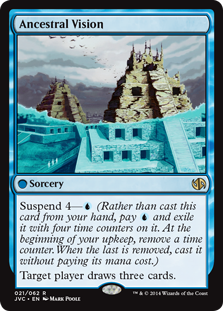 One Ancestral Vision deck solidifies Tier 1 status
One Ancestral Vision deck solidifies Tier 1 status
SCG Milwaukee showcased zero blue-based control decks in the Top 8 (never mind Nick Hansen's Jeskai Geist or Michael Majors' Grixis Control at 13th and 16th respectively). We also had only one blue-based deck in the Day 2 top five, which was mixed between Temur and Titan versions, with the rest not cracking top ten (never mind their collective Day 2 share at about 12%). This tension between blue's outward failure and hidden success is going to be big in May, with many players denouncing Vision and its blue supporting cast as a failed cause. I'm more optimistic. To me, these hidden successes point to an underlying viability which the Grand Prix will spotlight. I see one Vision deck cracking Tier 1, and I have my money on either Jeskai or Grixis. URx Scapeshift builds aren't bad, but they haven't gained enough either internally or contextually to suddenly propel them to Tier 1. Vision (which Scapeshift doesn't really run) should give either Jeskai or Grixis the boost it needs to finally make a Tier 1 home.
That wraps up our April metagame breakdown and hopefully gives us a smooth transition into the Modern MAY-hem of the coming month (apologies to Quiet Speculation readers who had to endure that pun twice in one week). It's been fun to sift through the metagame stats in such an open format, as opposed to one crushed in latticed tentacles, and I'm optimistic we'll keep having such diverse fields to analyze as 2016 progresses.
Come find me in the comments with any questions you have about decks, cards, metagame shares, data methods, or why you should play Ad Nauseam in the upcoming Grand Prix. No, seriously. Play Ad Nauseam. The metagame hasn't been this ripe for some old-school combo reaping since Darren Elderfield took Top 8 at Grand Prix Charlotte last year. Thanks for reading and I'll see you all next week as we return to fix some Modern with Forsythe's nine format guidelines!





Just wanted to point out that the super low mtgo % of merfolk players is in part due to kira, great-glass spinner being bugged online
What he said.
Huh. Guess I picked a good time to try out other decks. A little surprised that online Merfolk isn’t using Monastery Siege in the meantime (I know it’s worse, but everyone used to be really high on the card).
A lot of players don’t like playing what they know to be a suboptimal version of a deck because of outside factors like a card being bugged online. I know if I lent my Goyfs to someone, for instance, I would not want to play Temur Delver with a set of Skinshifters. I’d just play something else.
Interesting. MTGO results aren’t being weighed too heavily right now (n is relatively small), but that’s a good datapoint to know.
For the matter of blue decks not seeming to be fairing well, something that has long been true is that blue-based control decks in Modern tend to be fairly reliant on innovations, tweaks or whatever to find significant results. The decks with ancestral vision to achieve some okay finishes so far have been novel enough that I think it will encourage many players to adopt new tech and/or keep developing their own.
From my perspective, as a long time player of unfun spike decks(multiple decades), in the long run it might be best for grindy blue-based control decks if the archetype continue to exist as it does in the format; gaining occasional successes to prove its potential. The reason is for new cards to be printed to reinvigorate the archetype to better address the constraints imposed by power creep of creatures in new sets, etc, etc. A functional 2cc vanilla counter wouldn’t even do it probably. 1cc discard is really, really good and so are a lot of explosive aggro strategies.
I think a big factor is lack of confidence in the archetype, even though it may have the tools to succeed. People just don’t know how to build the list yet because we’re just one month into the new metagame. If the deck is viable, which it might not be, then we’ll see something more coherent and consistent emerge at the Grand Prix. New cards down the road might help, as might unbans like JTMS, but the strategies still need a big finish in order to make it in the format.
Which version of Ad Nauseam would you recommend? The “stock” version or the one with Glittering Wish?
You are better off with the stock version with spoils the vault
Stock Esper version is probably better. It certainly has more results, but that might just be a function of popularity and profile, not of actually being better. One reason to believe Esper’s results are performance-related is the slight gameplan change in both decks: Esper Ad Nauseam is more focused around the combo, and I generally want to be focused and linear on a combo deck. With the Wish build, you can get these awkward hands where you really want to just execute the combo but you have a toolbox Wish in hand and not Peers or Spoils.
Talking about ad naudeam, do you think that this is the time for maindeck laboratory maniac to shine?
It’s your only out to Abzan Company if they combo on turn 3-4, and you only have a turn to win if they get the life because they’ll scry Redcap to the top. Or two turns if you can Pact the Redcap and then Grace on next upkeep to win that turn. Either way, you’ll need 5 mana for Ad Nauseam, 3 for Maniac, 1 for the draw spell, and maybe 1 more for Grace. This should be doable as long as you didn’t exile too many SSGs early: Bloom (3 mana), four lands (4 mana), and 3-4 SSG (3-4 mana) gets you to 10-11 which is right where you need to be to win off Maniac.
Some Ad Nauseam players say they win just fine without Maniac and that the Company player isn’t comboing. I’d guess they combo on turns 3-4 in about 15%-20% of games, so if you want to roll with those odds game one, you don’t need Maniac.
As much as I am enjoying this analysis, man it is a little disheartening as a new player just trying to get started in modern to see the decks that are tier one and then look up the pricing.
Still, as an economist at heart I applaud the work being put into this!
Many Tier 1 decks are indeed expensive, but Tier 2 is much more reasonable. I’ll also add that many of those Tier 1 decks aren’t significantly more expensive than some Tier 1 Standard decks right now, courtesy of Mr. Jace. That said, it’s all but inevitable there’s a price gap between Tier 1 Modern and Tier 1 Standard, but as long as Tier 2 decks remain more reasonable and viable, this is okay. Decks also last longer in Modern (especially, we hope, without the PT inducing bans)!
Which is why I am trading out of standard and into modern. The only question left is which deck to go to first. I’m sure you guys already have a beginners article or two I really should look for those.
I’m not sure we do have that kind of “Get Into Modern” article. Good topic for another day! I’d start with a Tier 1 or Tier 2 deck that fits your play style. This ensures you have something that stays relevant from month-to-month, and there’s a good budget spread among those strategies.
So is W/B Tokens considered Tier 4 or…?
Currently, yes, but remember that these are monthly tierings and not necessarily overall Modern tierings throughout a longer timespan. On that longer scale, BW Tokens is still probably Tier 3.
Thanks!